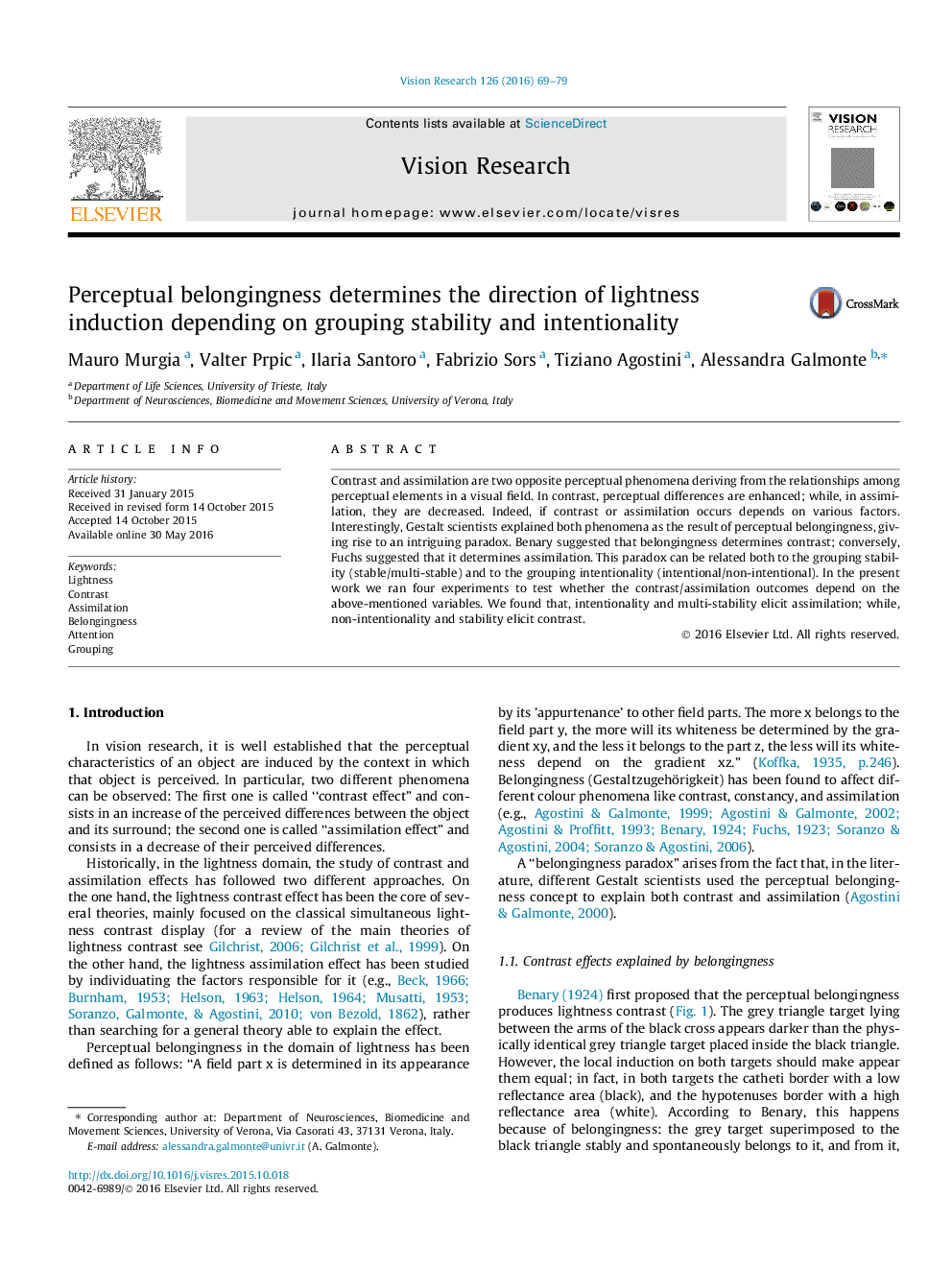| کد مقاله | کد نشریه | سال انتشار | مقاله انگلیسی | نسخه تمام متن |
|---|---|---|---|---|
| 6202901 | 1603173 | 2016 | 11 صفحه PDF | دانلود رایگان |
- Contrast and assimilation are two opposite perceptual phenomena.
- Paradoxically, both contrast and assimilation were explained with belongingness.
- Perceptual belongingness is modulated by both grouping intentionality and stability.
- Non-intentionality and stability elicit contrast.
- Intentionality and multi-stability elicit assimilation.
Contrast and assimilation are two opposite perceptual phenomena deriving from the relationships among perceptual elements in a visual field. In contrast, perceptual differences are enhanced; while, in assimilation, they are decreased. Indeed, if contrast or assimilation occurs depends on various factors. Interestingly, Gestalt scientists explained both phenomena as the result of perceptual belongingness, giving rise to an intriguing paradox. Benary suggested that belongingness determines contrast; conversely, Fuchs suggested that it determines assimilation. This paradox can be related both to the grouping stability (stable/multi-stable) and to the grouping intentionality (intentional/non-intentional). In the present work we ran four experiments to test whether the contrast/assimilation outcomes depend on the above-mentioned variables. We found that, intentionality and multi-stability elicit assimilation; while, non-intentionality and stability elicit contrast.
Journal: Vision Research - Volume 126, September 2016, Pages 69-79
